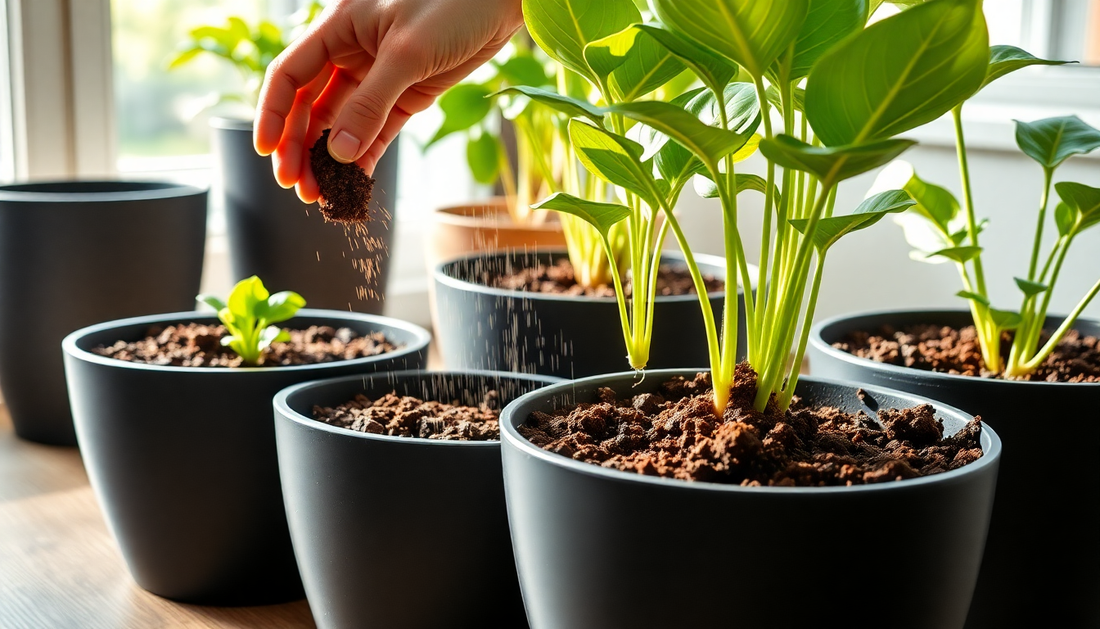
The Best Potting Mix for Self-Watering Pots
As a passionate gardener, I've always been intrigued by the concept of self-watering pots. These ingenious containers not only make watering a breeze but also help to maintain consistent soil moisture levels, which is crucial for the health and growth of your plants. However, finding the right potting mix for self-watering pots can be a bit of a challenge. In this comprehensive blog post, I'll share my insights on the best potting mix for self-watering containers, so you can create a thriving oasis in your own backyard or balcony.
Understanding Self-Watering Pots
Self-watering pots, also known as sub-irrigation planters, are designed to provide a steady supply of water to the plant's roots without the need for frequent manual watering. These containers typically have a reservoir at the bottom that holds water, and a wick or capillary system that draws the water up to the soil as the plant needs it.
The key advantage of self-watering pots is that they help to prevent overwatering and underwatering, both of which can be detrimental to plant health. By maintaining consistent soil moisture, self-watering pots can also reduce the risk of disease and promote stronger, healthier root systems.
Choosing the Right Potting Mix
When it comes to self-watering pots, the choice of potting mix is crucial. The ideal soil should have the following characteristics:
Moisture-Wicking Ability
The potting mix should be able to effectively wick water from the reservoir up to the plant's roots. This means it should have a high water-holding capacity and be able to draw moisture upwards through capillary action.
Aeration and Drainage
While the soil needs to be able to retain moisture, it should also have good drainage to prevent waterlogging and root rot. The mix should contain materials that provide aeration, such as perlite or vermiculite, to ensure proper oxygen circulation around the roots.
Nutrient-Rich
The potting mix should be nutrient-rich to support the plant's growth and development. Incorporating organic matter, such as compost or aged bark, can help provide a steady supply of essential nutrients.
pH Balance
The ideal pH range for most plants is between 6.0 and 7.0. The potting mix should be formulated to maintain this pH balance, which is essential for nutrient uptake and overall plant health.
The Best Potting Mix Recipes for Self-Watering Pots
Based on the criteria mentioned above, here are some of the best potting mix recipes for self-watering pots:
Recipe 1: Moisture-Wicking Soil Mix
- 40% peat moss or coco coir
- 30% vermiculite or perlite
- 20% compost or aged bark
- 10% sand or fine gravel
This mix is designed to have excellent water-holding capacity while still maintaining good drainage and aeration. The peat moss or coco coir helps to retain moisture, while the vermiculite or perlite ensures the soil doesn't become compacted. The compost or aged bark provides a steady supply of nutrients, and the sand or gravel helps to improve drainage.
Recipe 2: Organic Compost-Based Mix
- 50% high-quality compost
- 30% perlite or vermiculite
- 20% coconut coir or sphagnum peat moss
This mix is a more organic-based option that relies on the nutrient-rich compost as the foundation. The perlite or vermiculite helps to aerate the soil and improve drainage, while the coconut coir or sphagnum peat moss adds moisture-retaining properties.
Recipe 3: Soilless Potting Mix
- 40% peat moss or coconut coir
- 30% perlite
- 20% vermiculite
- 10% compost or slow-release organic fertilizer
This soilless potting mix is a great choice for self-watering pots, as it is lightweight and has excellent water-holding capacity. The peat moss or coconut coir provides the moisture-wicking ability, while the perlite and vermiculite ensure proper aeration and drainage. The addition of compost or slow-release organic fertilizer helps to supply essential nutrients to the plants.
Preparing and Maintaining the Potting Mix
When preparing the potting mix for your self-watering pots, it's important to thoroughly mix all the ingredients together to ensure an even distribution of moisture-wicking, aeration, and nutrient-rich components.
Once the plants are in the pots, it's essential to monitor the soil moisture levels and adjust the watering schedule as needed. The beauty of self-watering pots is that they can go longer between waterings, but it's still important to check the reservoir and refill it when necessary.
Additionally, you may want to consider topping up the potting mix with a fresh layer of compost or slow-release organic fertilizer every few months to replenish the nutrients in the soil.
Conclusion
Choosing the right potting mix is crucial for the success of your self-watering pots. By selecting a mix that is moisture-wicking, well-draining, and nutrient-rich, you can create the perfect environment for your plants to thrive. Whether you opt for a moisture-wicking soil mix, an organic compost-based blend, or a soilless potting mix, the key is to find a formula that meets the specific needs of your plants and your gardening setup.
With the right potting mix and a little bit of care, your self-watering pots can become a low-maintenance oasis of lush, healthy plants that will bring joy and beauty to your outdoor space. Happy gardening!






No comments